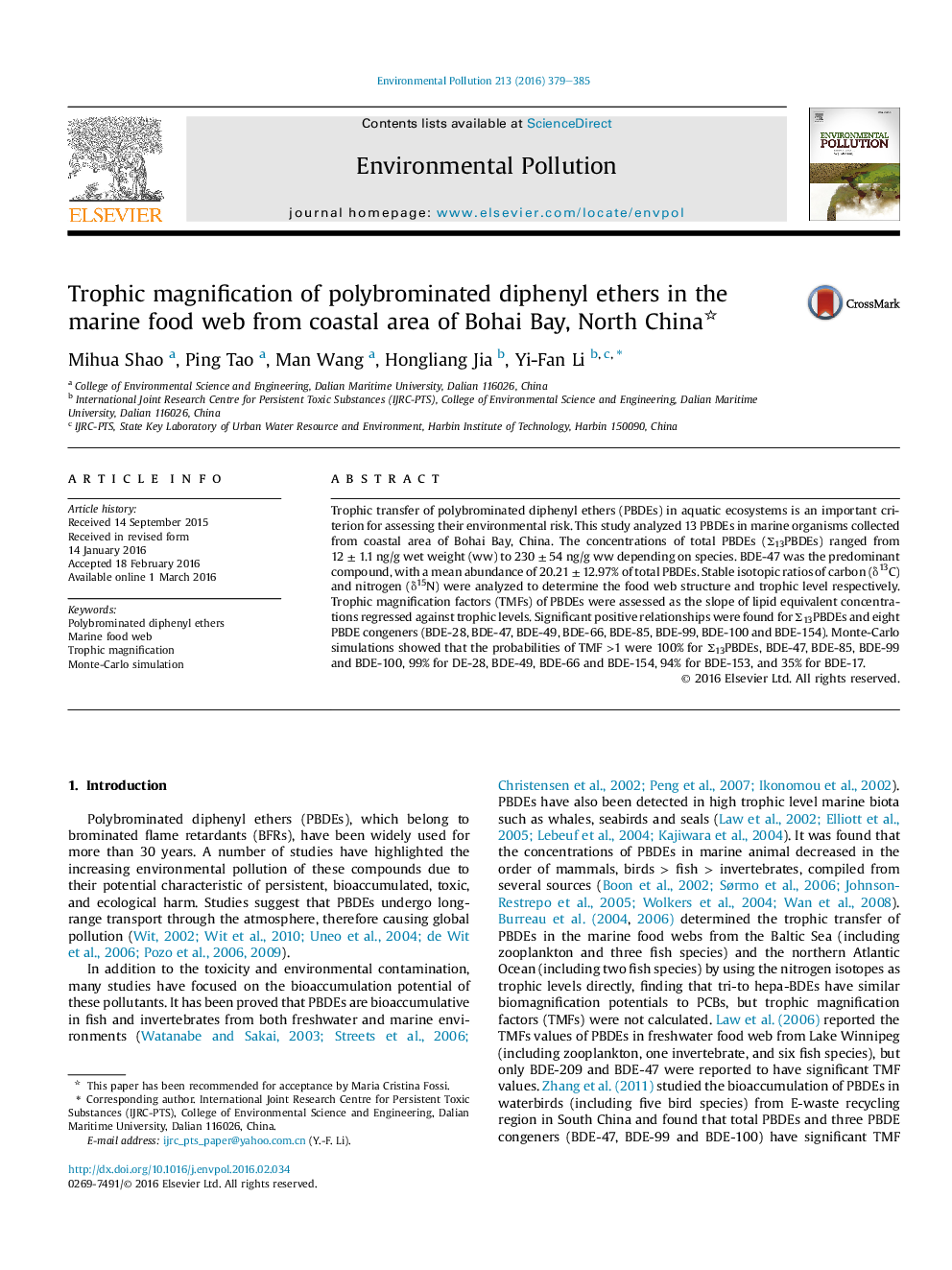| Article ID | Journal | Published Year | Pages | File Type |
|---|---|---|---|---|
| 6314889 | Environmental Pollution | 2016 | 7 Pages |
â¢PBDEs were determined in marine organisms from Northeast China.â¢The concentrations of Σ13PBDEs ranged from 12 ± 1.1 ng/g ww to 230 ± 54 ng/g depending species.â¢BDE-47 was the predominant PBDE congener.â¢TMFs were assessed as the slope of lipid equivalent concentrations regressed against trophic levels.â¢Monte-Carlo simulations were performed to assess the probabilities of observing TMF.
Trophic transfer of polybrominated diphenyl ethers (PBDEs) in aquatic ecosystems is an important criterion for assessing their environmental risk. This study analyzed 13 PBDEs in marine organisms collected from coastal area of Bohai Bay, China. The concentrations of total PBDEs (Σ13PBDEs) ranged from 12 ± 1.1 ng/g wet weight (ww) to 230 ± 54 ng/g ww depending on species. BDE-47 was the predominant compound, with a mean abundance of 20.21 ± 12.97% of total PBDEs. Stable isotopic ratios of carbon (δ13C) and nitrogen (δ15N) were analyzed to determine the food web structure and trophic level respectively. Trophic magnification factors (TMFs) of PBDEs were assessed as the slope of lipid equivalent concentrations regressed against trophic levels. Significant positive relationships were found for Σ13PBDEs and eight PBDE congeners (BDE-28, BDE-47, BDE-49, BDE-66, BDE-85, BDE-99, BDE-100 and BDE-154). Monte-Carlo simulations showed that the probabilities of TMF >1 were 100% for Σ13PBDEs, BDE-47, BDE-85, BDE-99 and BDE-100, 99% for DE-28, BDE-49, BDE-66 and BDE-154, 94% for BDE-153, and 35% for BDE-17.
Graphical abstractDownload high-res image (203KB)Download full-size image
